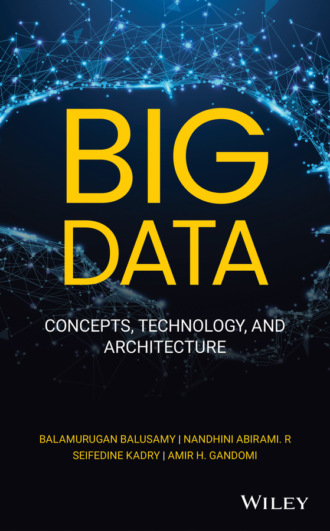
Полная версия
Big Data
[b]Learn Big Data from the ground up with this complete and up-to-date resource from leaders in the field [/b] [i]Big Data: Concepts, Technology, and Architecture[/i] delivers a comprehensive treatment of Big Data tools, terminology, and technology perfectly suited to a wide range of business professionals, academic researchers, and students. Beginning with a fulsome overview of what we mean when we say, “Big Data,” the book moves on to discuss every stage of the lifecycle of Big Data. You’ll learn about the creation of structured, unstructured, and semi-structured data, data storage solutions, traditional database solutions like SQL, data processing, data analytics, machine learning, and data mining. You’ll also discover how specific technologies like Apache Hadoop, SQOOP, and Flume work. [i]Big Data[/i] also covers the central topic of big data visualization with Tableau, and you’ll learn how to create scatter plots, histograms, bar, line, and pie charts with that software. Accessibly organized, [i]Big Data[/i] includes illuminating case studies throughout the material, showing you how the included concepts have been applied in real-world settings. Some of those concepts include: The common challenges facing big data technology and technologists, like data heterogeneity and incompleteness, data volume and velocity, storage limitations, and privacy concerns Relational and non-relational databases, like RDBMS, NoSQL, and NewSQL databases Virtualizing Big Data through encapsulation, partitioning, and isolating, as well as big data server virtualization Apache software, including Hadoop, Cassandra, Avro, Pig, Mahout, Oozie, and Hive The Big Data analytics lifecycle, including business case evaluation, data preparation, extraction, transformation, analysis, and visualization Perfect for data scientists, data engineers, and database managers, [i]Big Data[/i] also belongs on the bookshelves of business intelligence analysts who are required to make decisions based on large volumes of information. Executives and managers who lead teams responsible for keeping or understanding large datasets will also benefit from this book.



